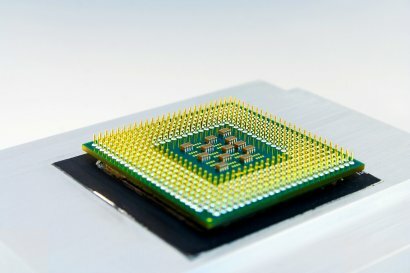Definition of x86 Architecture
Miscellanea / / July 04, 2021
By Guillem Alsina González, in Oct. 2016
 Although perhaps not all of you are familiar with this concept, the truth is that it has largely shaped the world of technology that we know today thanks to its total mastery of the world of computers personal.
Although perhaps not all of you are familiar with this concept, the truth is that it has largely shaped the world of technology that we know today thanks to its total mastery of the world of computers personal.
The x86 architecture is, in essence, the way the main chips that power both desktops and laptops are built at the most basic level.
Although this reality does not occur in the field of smart phones (smartphones) and touch tablets.
Historically, the x86 architecture is developed by the Californian Intel for its series of microprocessors 8086 of 1978
The 8086 was a CPU 16-bit very powerful for its time, but whose price was in line. So what Intel did was launch a "little brother" chip, the 8088. The difference with the previous one was that although internally it worked at 16 bits, the data bus was 8.
IBM relied on the latter for its first PC. Thanks to certain errors or shortcomings in the patents and registrations of this machine, any manufacturer could copy it, needing only two external components to launch one.
computer 100% IBM compatible: Intel CPU, and operating system MS-DOS provided by Microsoft.As IBM was a key reference at that time, many computer manufacturers chose to offer “PC compatible ”, clearly referring to the fact that they worked exactly the same as the original PC, but for a fraction of its price.
The original IBM PC is the key to the broad dominance of both Intel and Microsoft in the field of computers
Seeing the success at hand and to prevent a leak to another microchip manufacturer, Intel then adopted a strict politics backward compatibility, so that when buying a new PC it was possible to run the software old, although this did not necessarily imply that all new software worked on the old machine.
This condition was enough for the microcomputer industry to be interested and to adopt it without palliative.
 Not all manufacturers fell under the influence of Intel; Apple used the architecture Motorola 68000 (later changed to PowerPC and much later to Intel x86-64), which also appealed to Commodore for its Amiga, or Atari for its ST, while Sun would bet on the RISC architecture before also introducing the x86.
Not all manufacturers fell under the influence of Intel; Apple used the architecture Motorola 68000 (later changed to PowerPC and much later to Intel x86-64), which also appealed to Commodore for its Amiga, or Atari for its ST, while Sun would bet on the RISC architecture before also introducing the x86.
From here, Intel implemented performance improvements in subsequent copies of its family of CPUs, which never abandoned backward compatibility.
The 80286 introduced protected mode, allowing true multitasking operating systems; the 386 made the leap to 32-bit and dramatically improved multitasking capabilities; the 486 integrated the math coprocessor and the cache memory on the same chip; the Pentium improves the simultaneous execution of instructions
From here, Intel's x86 microchips were miniaturizing their components more, with which they could add more and gain in power and velocity calculation.
The next quantum leap was made with the eighth generation of x86 compatible mics, which introduced 64-bit bus width as well as multiple cores. This is in the ecosystem of microchips with which we are living today.
Historically, not only has Intel made x86 chips, but so have other manufacturers such as AMD or Cyrix
However, these "alternative" brands have not achieved so much success in the market, being AMD the only one that has managed to put a certain face on the Californian multinational.
Photos: Fotolia - Alexander Lukin / Alexandr Vedmed
Topics in x86 Architecture

